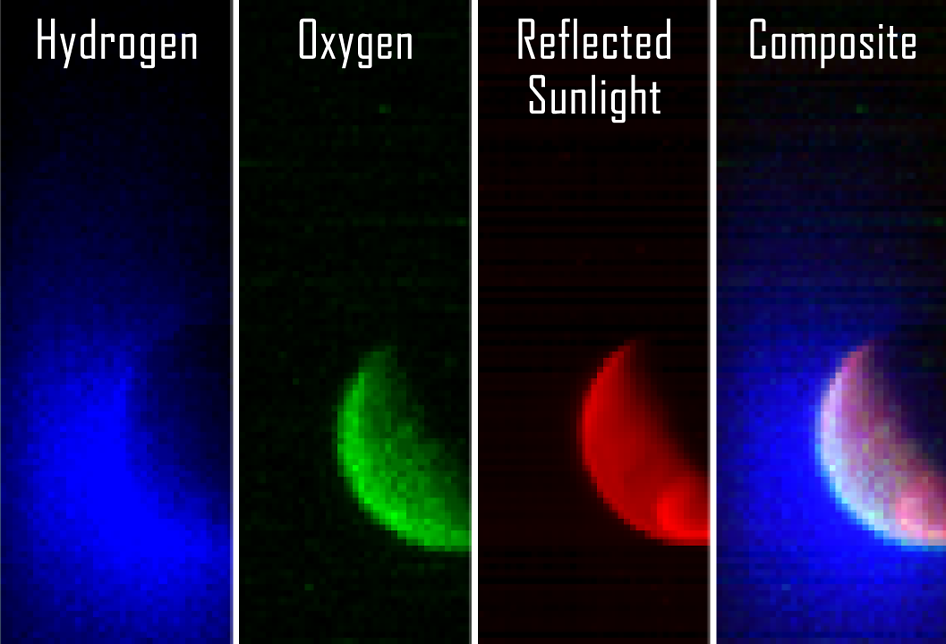The Martian orbital satellites MAVEN and Mangalyaan transmitted the first photos of Mars

The first shot taken by the American device MAVEN
It seems that all systems of the MAVEN satellite, which arrived in Mars orbit just 4 days ago, are functioning normally. Now NASA experts have published the first photos of Mars taken by satellite at a distance of 36 thousand kilometers from the surface of the Red Planet.
The photos were obtained with the Imaging Ultraviolet Spectrograph (IUVS) instrument (ultraviolet spectrograph) 8 hours after arrival in orbit. The photographs themselves were edited in a graphical editor, the colors are not real, they were chosen by the operator to demonstrate the results of various shooting modes.
')
The blue image shows the passage of sunlight through the clouds of Mars, with the scattering of radiation in atomic hydrogen. Clouds are at a height of thousands of kilometers above the surface of the planet.
The green image demonstrates the scattering of solar radiation in atomic oxygen.
A red shows the dispersion of solar radiation in the ice of the polar zone.
The fourth photo is a hybrid image collected from the three previous photos.
It is worth noting that oxygen is closer to the surface of Mars than hydrogen, since the element itself is heavier. Both hydrogen and oxygen are formed as a result of the decomposition of water molecules and carbon dioxide in the atmosphere of Mars. One of the tasks of an orbiting satellite is to determine the rate at which these gases escape from the atmosphere of Mars. Such data will make it possible to calculate the loss of water by Mars during the time since the existence of water in liquid form on the surface of the Red Planet to the present day.
UPD : The Indian satellite Mangalyaan also sent a photograph of the surface of Mars, the first and so far only photograph since it entered permanent orbit.

The first shot taken by the Indian device Mangalyaan
Mangalyaan will search for traces of methane in the atmosphere of Mars. Methane, in turn, may indicate the presence of living organisms in the past of Mars. On the other hand, this gas, an organic compound, can be formed without any participation of living organisms (it is worth remembering Titan).

Indians are pleased with the success of their project.
As far as can be judged, the Indian and American satellites are working in the normal mode, and their scientific instruments are gradually being put into operation.
Via NASA
Source: https://habr.com/ru/post/238125/
All Articles